Currently, hex screws are widely used in the fastener industry. Compared to straight and crossed heads, hex screws offer better assembly due to their reduced tendency to slip and also provide high torque.
Furthermore, hexagon head screws have a simple structure and are economical when compared to dodecagonal head and multi-tooth screws.
Therefore, hex bolts have a higher comprehensive price and are the most commonly used bolt type in automobiles.
Hexagonal screws can be classified into two types: internal hexagonal screws and external hexagonal screws. What distinguishes these two screws and how to choose between them when applying them?
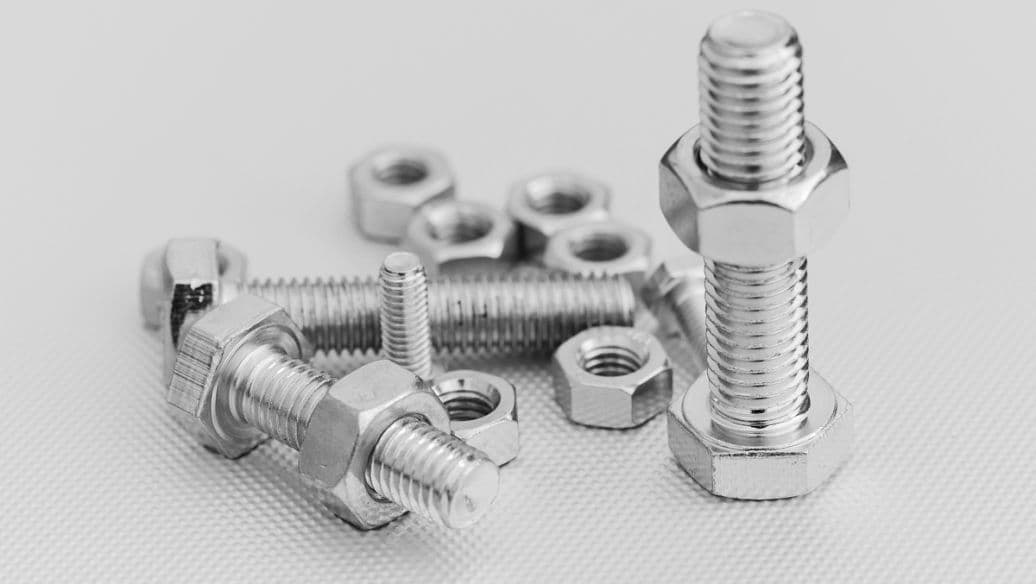
This article introduces the structure, cost, clamping tools, advantages, disadvantages and scope of application.
1. Structure
Structurally, internal hex screws and external hex screws are easy to distinguish. Basically there is no difference in the threaded part. The outer hexagon refers to the hexagon-shaped head, which has no depression.
To increase the head support area, external hexagonal flange screws can also be used. This variant is widely used. The outer edge of the hex screw head is round, and the middle is a concave hexagon. The most common type is cylindrical head hexagon, but there are also pan head hex socket, countersunk head hex socket and flat head hex socket.
Grub screws, limit screws, machine screws, and other similar items are called grub screws. Hex bolts can also be changed into hex flange bolts to increase the head contact area.
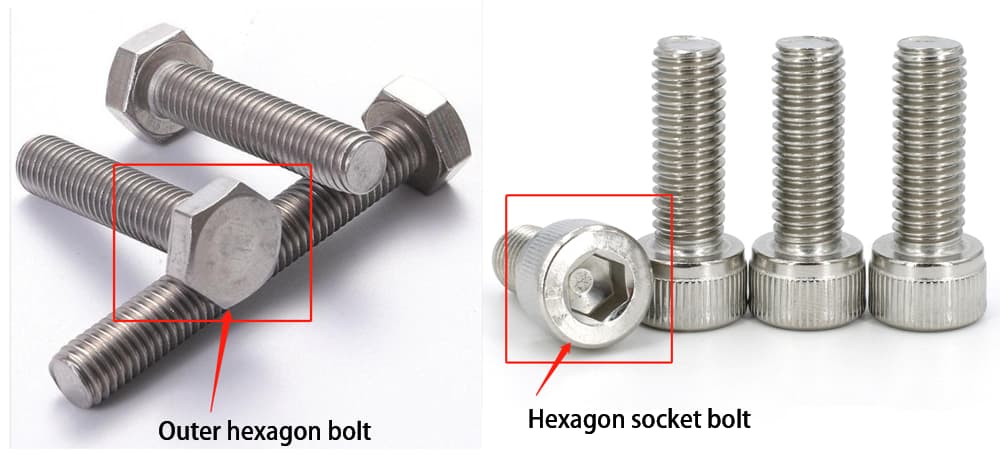
To control the friction coefficient of the screw head or improve the anti-loosening performance, external hexagon combination screws and internal hexagon combination screws can also be used. They are illustrated in the figure below.
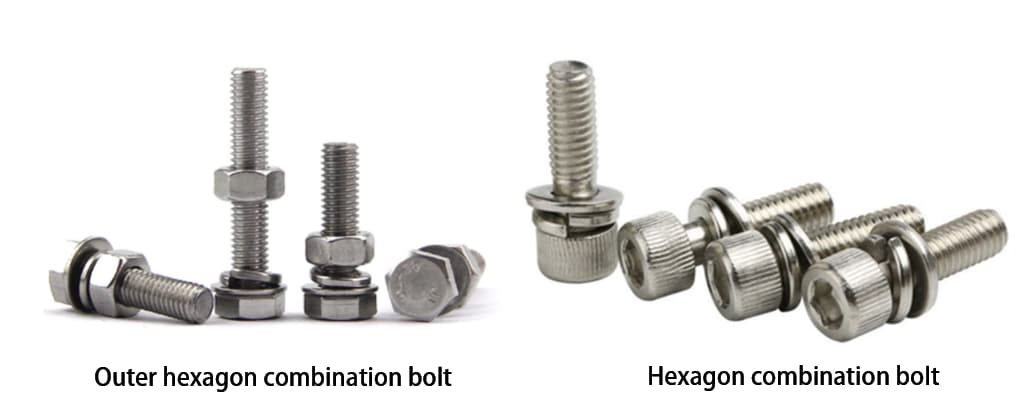
2. Cost
Cylindrical head screws and hex screws generally have their threads formed by screwing. The bolting plates used for both are essentially the same and there is no significant difference in cost between them.
However, the head manufacturing process of these two types of screws is different. Due to the different structures of the head, different molds and processes are required for each one.
The manufacturing cost of hex screw head is higher than that of hex thread due to differences in the manufacturing process.
In my experience, the cost of the external hex bolt is only half the cost of the internal hex bolt.
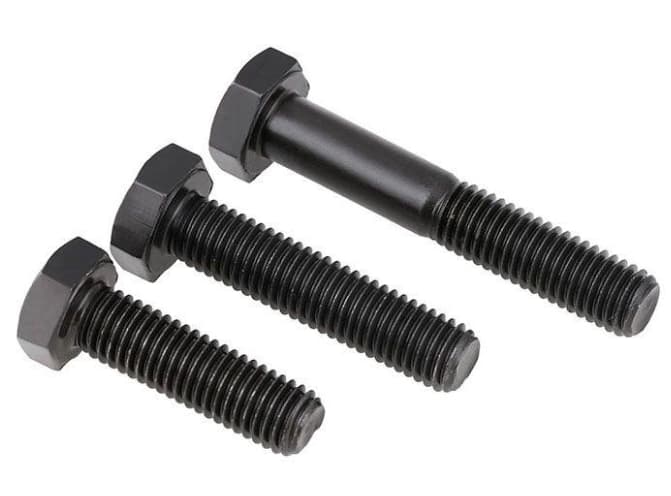
3. Clamping tool
It can be divided into two parts: assembly in life and production.
For live assembly, the shape of the hexagonal screwdriver is “L” shaped, with one side longer than the other. The shorter end is used for screwing, while holding the longer end can save effort and tighten screws better.
The external hex screw requires a wrench with an equilateral hex head, such as an adjustable wrench, ring wrench, or open-end wrench. As shown in the figure below, you may be familiar with the following two tools if you have done daily assembly or maintenance at home.
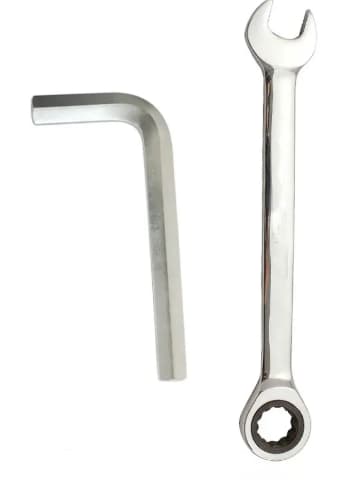
To meet tightening quality and automation requirements, assembly in production will be carried out using fixed torque wrenches and high-precision tightening guns. This requires that the corresponding clamping sleeves be matched.
The outer hex bolt requires a concave hex sleeve, while the inner hex bolt requires a convex hex sleeve. As shown in the figure below, a series of sleeves will be provided to match the size of the screw head.
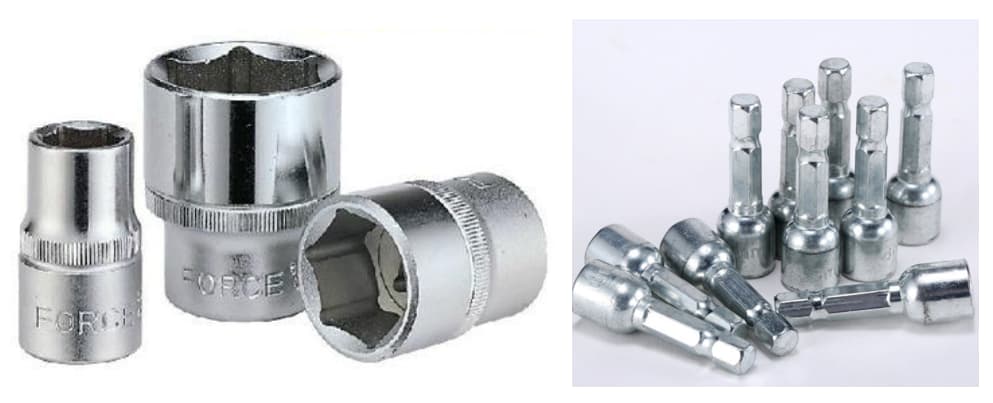
4. Advantages and disadvantages
4.1 Advantages
External hex screws/bolts:
- They have good self-locking properties.
- They provide a greater contact area and pre-tightening force.
- The full thread has a wider length range.
- They may have countersunk holes to secure the position of the part and support shear caused by transverse force.
- The head is thinner than that of a hex socket, and in some cases a hex socket cannot be used as a replacement.
Hex head screws/screws:
- They are easy to attach.
- They are not easy to disassemble.
- They have a non-slip angle.
- They can fit into small spaces.
- They can withstand large loads.
- They can be countersunk and embedded inside the workpiece, making them more exquisite and beautiful without interfering with other workpieces.
4.2 Disadvantages
External hex bolt/bolt:
- It takes up a lot of space and is not suitable for more delicate occasions.
- Cannot be used for countersunk heads.
Hex head screws/screws:
- The contact area and preload are small.
- Beyond a certain length, the thread is not fully present.
- The fastening tool may be difficult to match, but it is easy to screw in and replace.
- A professional wrench must be used for disassembly, as it is not easy to disassemble under normal circumstances.
5. Scope of application
These are the advantages and disadvantages of external hex bolt and internal hex bolt, so how to choose them in the application?
If a large axial force is required at the clamping point, which means that the tightening torque is high and there is sufficient external space for tightening, then an external hexagonal screw must be used.
However, if there is limited space in the clamping position or a need for a countersunk head to improve aesthetics, and the axial force required for clamping is small, which means the tightening torque is low, a hex screw can be used .
To illustrate, let's consider the subframe and body connection point of a car, where several bolts pass through the bottom of the subframe and are tightened into the body. As the bottom is not visible and has no aesthetic requirements, and there is no impediment to tightening, a high axial force and torque are required (the screws are tightened after yielding).
Therefore, for this connection position, it is recommended to use external hexagonal screws for tightening.
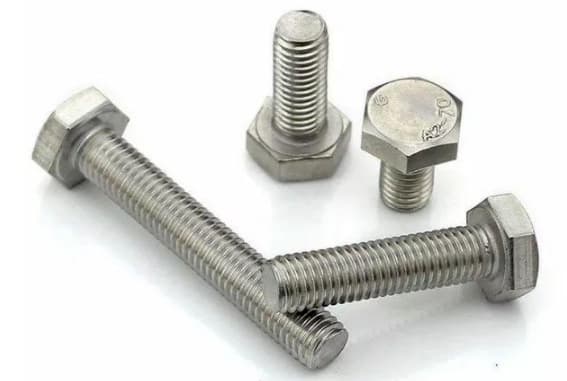
The interior trim connection is an area visible to the customer and often requires aesthetic considerations. As such, a countersunk head structure is required, and the top of the screw head must be aligned with the structure of the connected part or be covered with an additional layer of parts.
Furthermore, the axial force and torque required to tighten in these positions are low. Therefore, hex bolts or hex bolts are highly suitable for fixing in these scenarios.
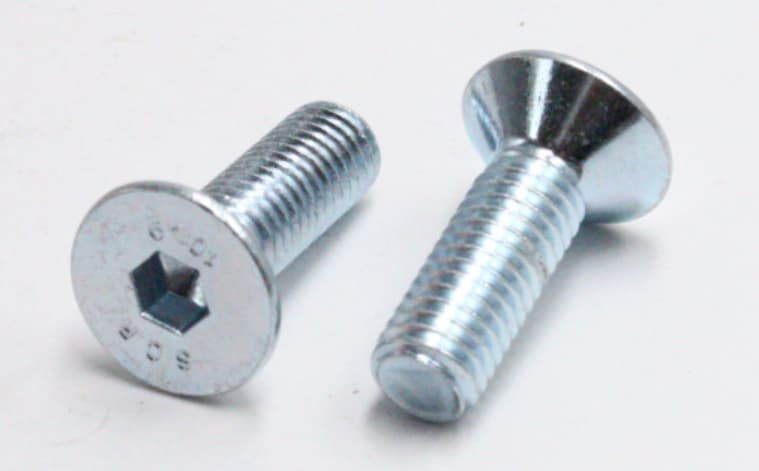
If you are not sure about what to choose, it will depend on whether the connection position requires an elegant appearance and has limited mounting space. In such cases, it is recommended to choose hex socket screws/screws.
Otherwise, external hex bolt/bolt can be selected. It is economical and can meet most other requirements.
This explains why external hex bolts/bolts are more commonly used than internal hex bolts/bolts.
6. Experience and Conclusion
Hexagon head bolts/bolts are widely used in various industries due to their simple structure, convenient use, moderate price and ease of tightening.
There are two types of common hex head screws/bolts: outer hex and inner hex. The main structure of the two can be clearly distinguished.
In terms of cost, the external hexagon costs half the price of the internal hexagon screw. Furthermore, the clamping tools used for both types have different service lives and production methods.
Based on the advantages and disadvantages of the two, it is recommended that socket head screws/screws are selected if the connection position requires delicacy, beauty and limited mounting space. However, if there are no such requirements, then external hex head screw/bolt should be chosen.

























































